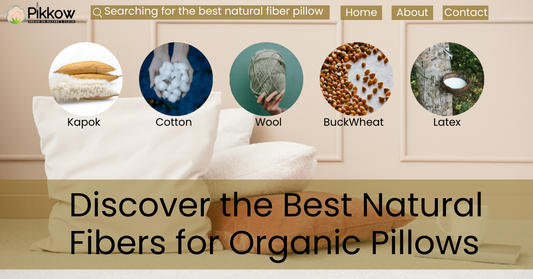Kapok fibre, also called Ilavam Panju in India, is an eco-friendly, hypoallergenic material with exceptional softness and versatility. This natural fibre comes from the kapok tree seeds, and its lightweight, buoyant nature makes it a preferred choice in bedding and upholstery industries. With rising demand for sustainable products, kapok fibre suppliers in India are witnessing significant growth in the kapok fibre market. This article explores where kapok comes from, its production process, and its increasing global relevance in the kapok fibre wholesale sector.
The Ilavam Panju Tree: The Source of Kapok Fibre
The Ilavam Panju tree, scientifically known as the Ceiba pentandra, is the primary source of kapok fibre. Native to tropical regions, this tree plays a crucial role in biodiversity, offering shade, shelter, and natural fibres used worldwide.
Where Does Kapok Come From?
Kapok fibre comes from the seed pods of the kapok tree, which are harvested after the tree produces flowers. Found in tropical climates such as India, Southeast Asia, South America, and Africa, kapok trees thrive in nutrient-rich soils. The natural fibre extracted from kapok tree seeds is celebrated for its sustainability and low environmental impact.
The Importance of Kapok Trees in India
In India, the Ilavam Panju tree is grown predominantly in Tamil Nadu and Karnataka. These regions provide the ideal warm, humid climate required for the growth of these trees. With minimal intervention, kapok tree seeds mature naturally, contributing to eco-friendly fibre production.
The Ilavam Panju tree is a sustainable marvel because it does not require fertilizers, pesticides, or excess water. This makes kapok fibre a preferred choice for individuals and businesses seeking greener alternatives, further boosting the kapok fibre market in India.
The Kapok Fibre Production Process
Harvesting Kapok Tree Seeds
The process begins when kapok tree seeds mature within their seed pods. Farmers harvest the pods manually to avoid harming the tree. Harvesting is done in a sustainable manner, ensuring the tree continues to grow and produce fibres annually.
Extraction of Kapok Fibre
Once harvested, the pods are split open to release the lightweight kapok fibre. The seeds are separated from the fibre using manual methods or minimal machinery to retain its purity. This eco-friendly extraction method aligns with ethical production standards followed by kapok fibre suppliers.
The natural properties of kapok fibre include:
- Lightweight and buoyant qualities
- Hypoallergenic and moisture-resistant nature
- Eco-friendliness and biodegradability
These qualities make kapok fibre wholesale an appealing option for businesses looking to adopt sustainable production practices.
Kapok Fibre Market in India: Growing Trends
India is emerging as a significant player in the kapok fibre market, supplying both domestic and international markets.
Leading Kapok Fibre Suppliers in India
The demand for kapok fibre suppliers in India is on the rise, particularly in southern states like Tamil Nadu and Karnataka. These regions are home to skilled farmers and fair-trade producers who sustainably manage the Ilavam Panju tree. Suppliers in India provide high-quality kapok fibre wholesale for industries such as:
- Eco-friendly bedding (pillows, mattresses)
- Upholstery and home furnishings
- Sustainable insulation materials
Kapok Fibre Wholesale and Export
With the increasing global focus on sustainability, kapok fibre wholesale has gained momentum. Indian kapok fibre suppliers play a crucial role in the export market, supplying high-quality fibre to countries like the United States, Japan, and Europe.
Key Factors Driving Growth in the Kapok Fibre Market
- Eco-Friendliness: Consumers prefer sustainable fibres over synthetic options.
- Hypoallergenic Nature: Kapok fibre resists dust mites and mold, making it ideal for bedding products.
- Rising Demand for Organic Products: The growing awareness of natural materials has fueled the kapok fibre market.
The Benefits of Kapok Fibre in Bedding and Home Goods
Kapok fibre’s unique properties make it a superior choice for eco-friendly bedding and furnishings.
Hypoallergenic and Safe for Health
Kapok fibre is naturally resistant to dust mites, mold, and bacteria, making it a hypoallergenic option. Unlike synthetic fibres, kapok does not release harmful chemicals, ensuring a healthier sleep environment. This aligns with consumer preferences for safe and natural materials.
Lightweight and Buoyant
The hollow structure of kapok fibre makes it incredibly lightweight and buoyant. These properties are especially beneficial for pillows and mattresses, as they provide optimal comfort and support without adding excess weight.
Eco-Friendly and Sustainable
Kapok fibre comes from naturally renewable resources. Since kapok tree seeds require no chemicals, pesticides, or excessive water, the fibre has a minimal carbon footprint. This sustainability boosts its appeal in the kapok fibre market.
Kapok Fibre vs. Other Natural Fibres
|
Feature |
Kapok Fibre |
Cotton |
|
Weight |
Lightweight and buoyant |
Heavier and denser |
|
Water Use |
Minimal water required |
High water consumption |
|
Chemical Usage |
Chemical-free cultivation |
Often requires pesticides |
|
Hypoallergenic |
Naturally hypoallergenic |
Prone to mold and dust mites |
|
Sustainability |
Highly sustainable and renewable |
Less sustainable in comparison |
This comparison highlights why kapok fibre suppliers in India are focusing on expanding their reach, especially in kapok fibre wholesale.
The Future of Kapok Fibre Wholesale
Rising Global Demand
As industries shift towards greener alternatives, the kapok fibre market is poised for significant growth. Indian kapok fibre suppliers are expected to play a key role in meeting this rising demand through sustainable production and ethical sourcing.
Potential Uses Beyond Bedding
The versatility of kapok fibre extends beyond pillows and mattresses. Potential applications include:
- Sustainable packaging materials
- Insulation in construction
- Eco-friendly fashion and textiles
With these advancements, the kapok fibre market is set to revolutionize industries worldwide, further increasing the demand for kapok fibre wholesale.
Conclusion
Kapok fibre, or Ilavam Panju, is a natural treasure with remarkable qualities. Its lightweight, hypoallergenic, and eco-friendly nature sets it apart from other fibres, making it a staple in the growing kapok fibre market. Indian kapok fibre suppliers are leading the way, providing sustainable and ethically sourced fibre to meet global demands.
By choosing kapok fibre wholesale, businesses and consumers are contributing to a greener, healthier planet. The Ilavam Panju tree continues to be a beacon of sustainability, providing kapok fibre that transforms industries and enhances daily comfort.
For those seeking premium kapok products, Pikkow Pillow offers high-quality, eco-friendly pillows made from natural kapok fibre. Experience the ultimate in comfort and sustainability today.
FAQs
Q1: Where does kapok fibre come from?
Kapok fibre comes from the seed pods of the Ilavam Panju tree (Ceiba pentandra), which grows in tropical regions across India, Southeast Asia, and South America.
Q2: What makes kapok fibre eco-friendly?
Kapok is naturally renewable and requires no chemicals, pesticides, or excessive water, making it a highly sustainable choice for bedding and textiles.
Q3: Who are the main kapok fibre suppliers in India?
India’s kapok fibre suppliers are mainly concentrated in Tamil Nadu and Karnataka, where kapok tree seeds are sustainably harvested and processed for wholesale markets.
Q4: How is kapok fibre different from cotton?
Kapok fibre is lighter, naturally hypoallergenic, and requires no chemicals during cultivation, unlike cotton, which often needs pesticides and large amounts of water.
Q5: What are the key markets for kapok fibre wholesale?
The primary markets include the United States, Europe, and Japan, where demand for sustainable and organic products is rapidly growing.











